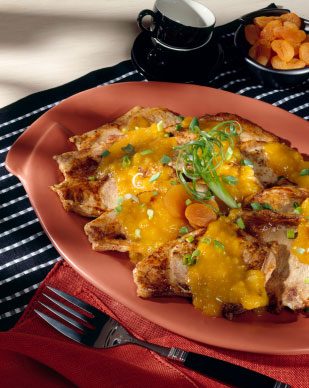



When successful restaurateurs open a second location, the sequel is often situated in a neighboring burg. In February, when chef Francisco Cabrera and his wife and business partner, Cecilia Jaramillo, opened a second El Sitio (Spanish for “the place”), they chose Collingswood—2,786 miles from the original, located in the rolling countryside of their native Quito, Ecuador.
The couple opened the first El Sitio in 2002 and, since moving to Collingswood in 2008, stay in daily touch with the nephew who runs it for them. “We chose Collingswood because of our kids,” says Cabrera, 55.
“They came to live here two years ago. Our son, Daniel, is finishing his degree in electronics at Drexel. Our daughter, Carolina, works at Villa Barone in Collingswood. Our youngest son, Nicholas, graduates this year from Camden Catholic. Instead of them following us, we followed them.”
Cabrera is also an able chef whose peripatetic roots—as a child, he lived all across South America with his Argentinean mother and traveling-businessman father—inform the agreeably nomadic menu at both El Sitio locations. In Collingswood, the rare disappointment comes from American concessions, like a not-special special of salmon topped with crab imperial. But the majority of El Sitio’s fare, influenced by the entwined cuisines of Ecuador, Argentina, Uruguay, and Peru, surprises and often delights.
“In South America,” says Cabrera, “empanadas are different not only from country to country but also from region to region.” El Sitio serves Argentine empanadas made with flaky artisan dough and filled with either garlicky chicken or raisin-studded ground beef. Because of the assertive presence of chopped green olive in both fillings, I preferred their Ecuadorian cousins, which come in two varieties. One is made of white corn filled with cumin-scented ground beef, peas, and rice; the other, from plantain dough filled with mozzarella and Asiago. (Cabrera says the cheese mixture approximates the flavor and texture of the traditional queso he uses in Quito.)
Seviche is another common thread. The Peruvian version employs finely diced corvina, a white Pacific sea bass, marinated in leche de tigre, a traditional “tiger’s milk” of citrus juices and mellow, yellow, Peruvian aji amarillo chilies. Lemon is the top note in El Sitio’s version, which arrives with the classic Peruvian accoutrements, corn and slices of cool sweet potato. Tender shrimp star in the Ecuadorian version; they’re submerged in a sweet, spicy, orangey marinade. Though I didn’t care for the accompanying popcorn, another traditional garnish, I still loved both seviches, which were more authentic and less gaudy than the versions served over the bridge in Philly.
Oregano-dusted sharp provolone, grilled and then baked in a cast-iron skillet, rounds out the appetizers—as traditional to Argentine parillerias (barbecue restaurants) as the grass-fed beef for which the country is famous. El Sitio imports its meat from Argentina’s next-door neighbor, Uruguay. This beef, too, comes from pastured cows that aren’t treated with hormones or antibiotics. “We serve three traditional cuts,” says Cabrera. “There’s the ojo (rib-eye), bife de chorico (strip loin), and tenderloin.” I had all three, and each was uncommonly delicious. Since pastured beef is naturally leaner than its corn- and grain-fed counterparts, the flavor emanated from the muscle rather than the fat: intensely beefy, with traces of minerals and grass.
Each time I ordered a steak medium rare, it came medium rare, whether stuffed with melted manchego (lomo manchego), paired with sweet garlic-and-basil-marinated grilled shrimp (mar y tierra), or served solo. For mar y tierra, as well as the chimichurri-dressed grilled shrimp, Cabrera has bowed to customers’ requests to remove the heads and shells. “When I do it at home,” he admits, “I keep them on.” Shrimp are more flavorful when cooked and served in their shells, heads on. It would be nice to be given the option to have them that way.
Among desserts, ironically, the most Latin—tres leches cake—was the weakest. I preferred the wedge of fluffy cheesecake reposing in a pond of tart raspberry sauce, and the slab of chocolate cake that delivered surprising notes of black licorice beneath its veil of chocolate frosting. This summer, Cabrera says, he will serve house-made gelato in tropical flavors like passion fruit—the testing phase for the gelateria he eventually plans to open. “Cecilia says I’m crazy,” he says with a laugh. Then again, so is operating two restaurants on two different continents, not that you could tell by dining at El Sitio in Collingswood.
Restaurant Details
- Cuisine Type:South American
- Price Range:Expensive



